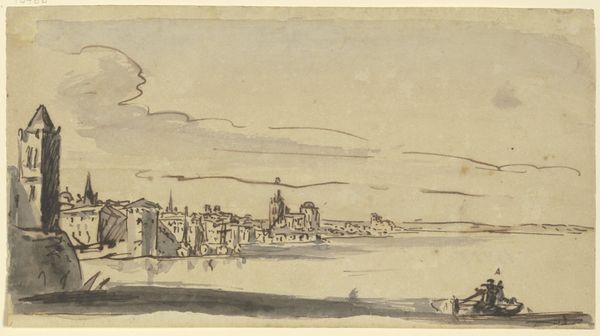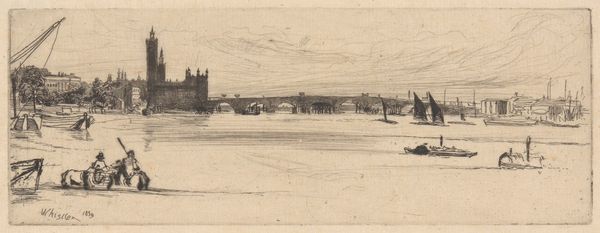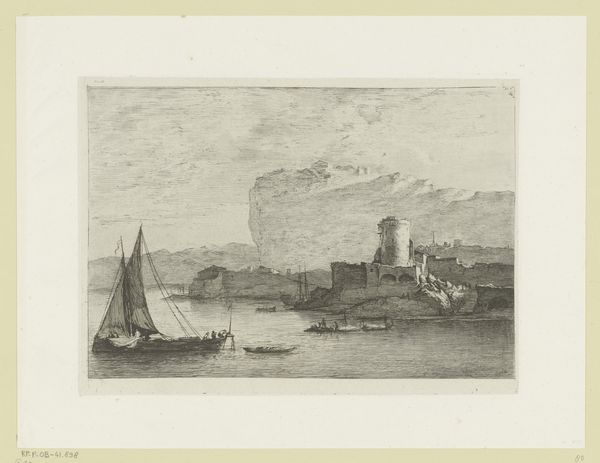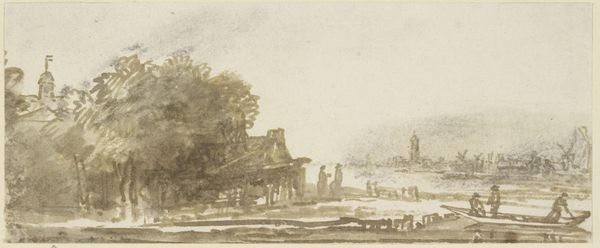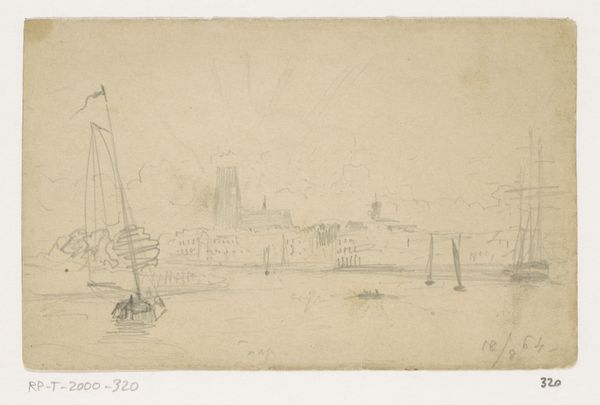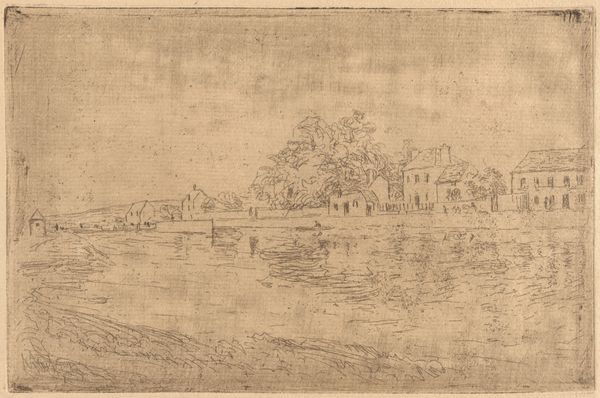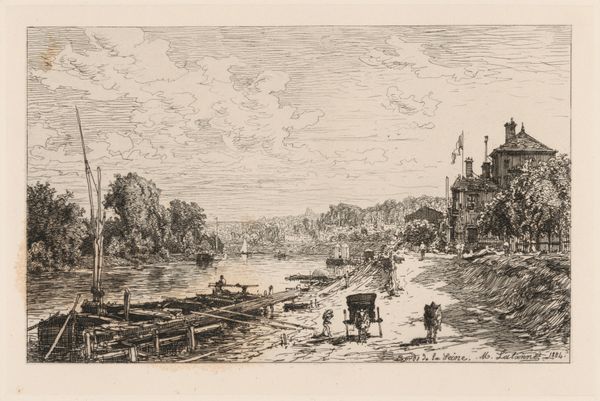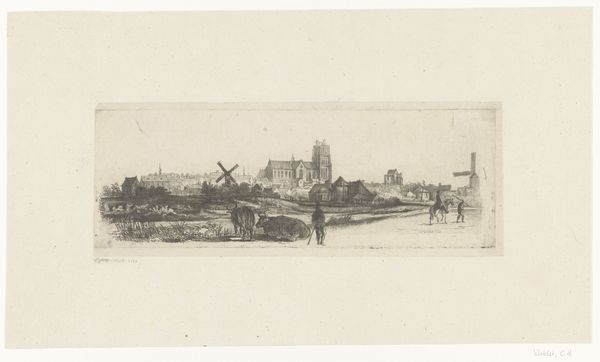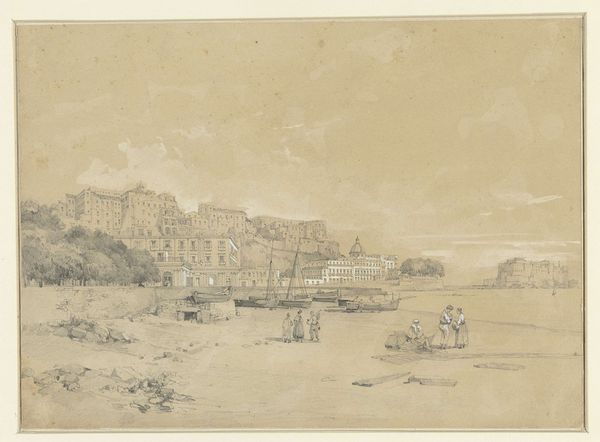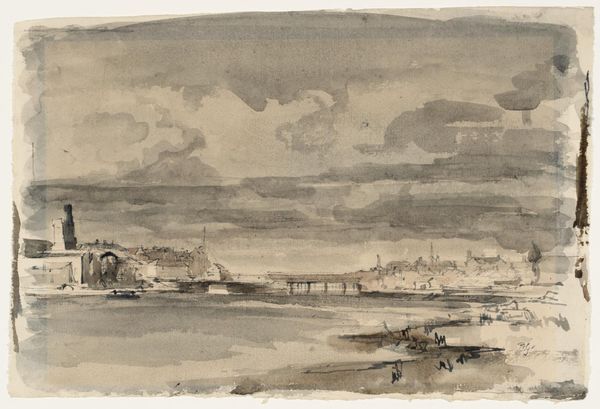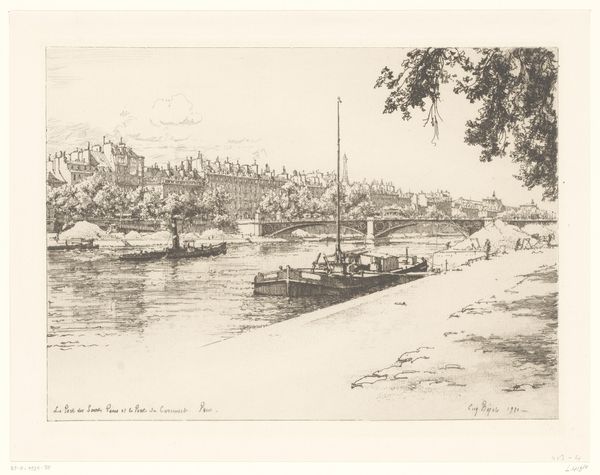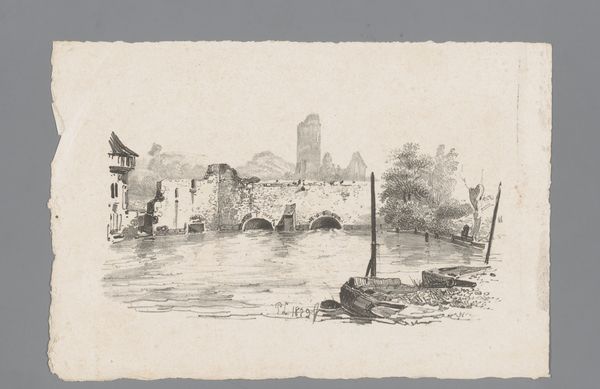
drawing, paper, pencil
#
drawing
#
landscape
#
paper
#
romanticism
#
pencil
#
cityscape
Dimensions: Sheet: 6 7/16 × 11 9/16 in. (16.3 × 29.3 cm)
Copyright: Public Domain
Editor: This is “The Town of Beccles from the Bridge,” a drawing made with pencil on paper, by John Sell Cotman, sometime between 1813 and 1823. There’s something so serene about this composition. All the light and shadow, the boats on the water...it feels very idyllic. How do you interpret this work, especially thinking about its historical context? Curator: This drawing encapsulates a shift in how British artists began to depict their nation. Instead of grand historical narratives, we see an increased interest in the everyday – the market towns, the rivers, the local industries. Cotman here isn't just showing us Beccles; he’s showing us a particular vision of Englishness tied to its landscape and its labour. What do you notice about the placement of the church in relation to the town? Editor: Well, it's prominent, definitely. It seems to anchor the composition and also sits slightly above the rest of the town. Is that a reflection of its real importance or more about Cotman’s artistic choices? Curator: It’s both, really. Churches, especially in smaller towns, weren't just religious centres; they were centres of power, wealth, and social control. Placing it centrally reinforces its dominance but it also speaks to the kind of stability that Cotman, and his audience, would likely value. He’s framing the social hierarchy of the town within a picturesque scene. Editor: That makes sense. So, he’s not just drawing what he sees but also reinforcing a certain social order through his art? Curator: Precisely. The picturesque, while seemingly innocent, often served to naturalize existing power structures by presenting an idealised, romanticised view of the landscape and the society within it. Cotman is not unique to this, of course. Can you think of other art from this time that tries to perform the same trick? Editor: This makes me think about how even landscapes can participate in complex power dynamics that shape what and who is seen, and more importantly, not seen. Thanks for making me consider that. Curator: My pleasure.
Comments
No comments
Be the first to comment and join the conversation on the ultimate creative platform.
